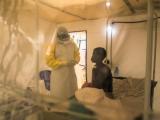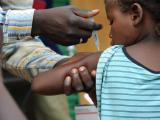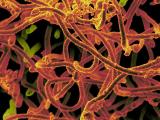Jul 13, 2011
Study suggests North American arenavirus group infects humans
A serologic analysis suggests that a group of arenaviruses found in North American wood rats can infect humans, according to a new report from Emerging Infectious Diseases (EID). Studies since the 1990s have shown that North American Tacaribe serocomplex viruses, a group that includes the Whitewater Arroyo virus (WWAV) and seven others, are widely distributed in wood rats in the United States and Mexico, says the report by authors from the Universtiy of Texas Medical Branch in Galveston and the Centers for Disease Control and Prevention (CDC). They analyzed serum and other samples that were collected from 1,185 US patients who had neurologic or undifferentiated febrile diseases from 1989 through 2000. Antibodies against an arenavirus were found in samples from 41 (3.5%) of the patients. The apparent corresponding virus in 10 patients was WWAV and in another 24 patients was lymphocytic choriomeningitis
virus; the pathogen in 7 patients was indeterminate. In two patients in particular, an increase in WWAV antibody titer between early and later samples suggested that the virus caused the illness. The findings "strengthen the notion that Tacaribe serocomplex viruses enzootic in North America are infectious in humans," the report says. The authors call for studies to define the clinical spectrum of diseases caused by these viruses, saying the illnesses may include aseptic meningitis, encephalitis, or meningoencephalitis.
Jul 13 EID study
CDC: Novel norovirus made big outbreak impact
A new norovirus strain emerged during the winter of 2009-10, causing 16% of all norovirus outbreaks, CDC scientists reported today. Outbreaks involving the virus, the most common cause of foodborne illness, are typically caused by GII.4 genotype strains. However, that winter a new GII.12 strain emerged, causing several outbreaks. The researchers' phylogenetic analysis of the strain found that it was distinct from GII.12 strains that emerged before 2009 and were most similar to ones previously identified from Australia and Hungary. The increase in novel GII.12 outbreaks was detected using two different surveillance networks, and the recombinant strain didn't show evidence of enhanced efficiency to replicate. The investigators suggested that unique amino acid substitutions that suggest emergence could have been caused by virulence features that were coded outside the highly variable P2 region or changes in population susceptibility. They
added that the high percentage of outbreaks caused by a rare genotype supports the importance of norovirus strain typing.
Jul 13 EID report




















